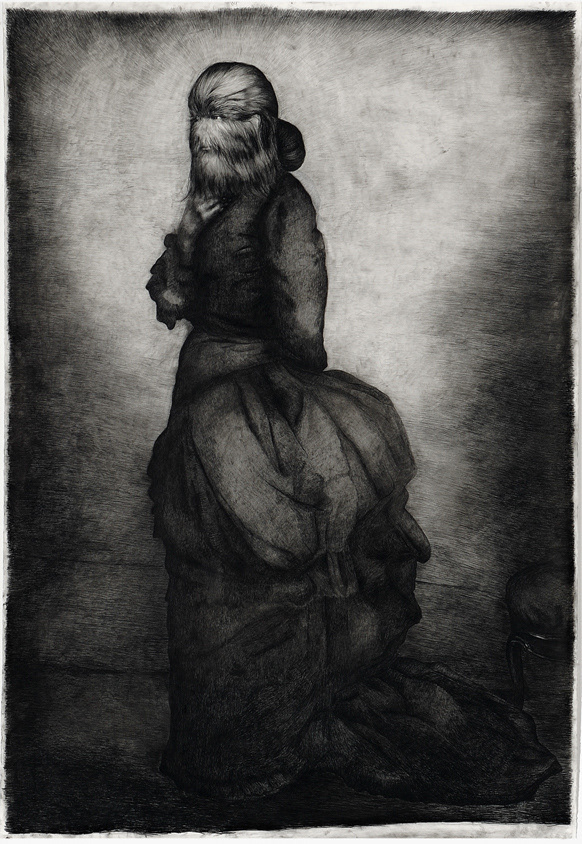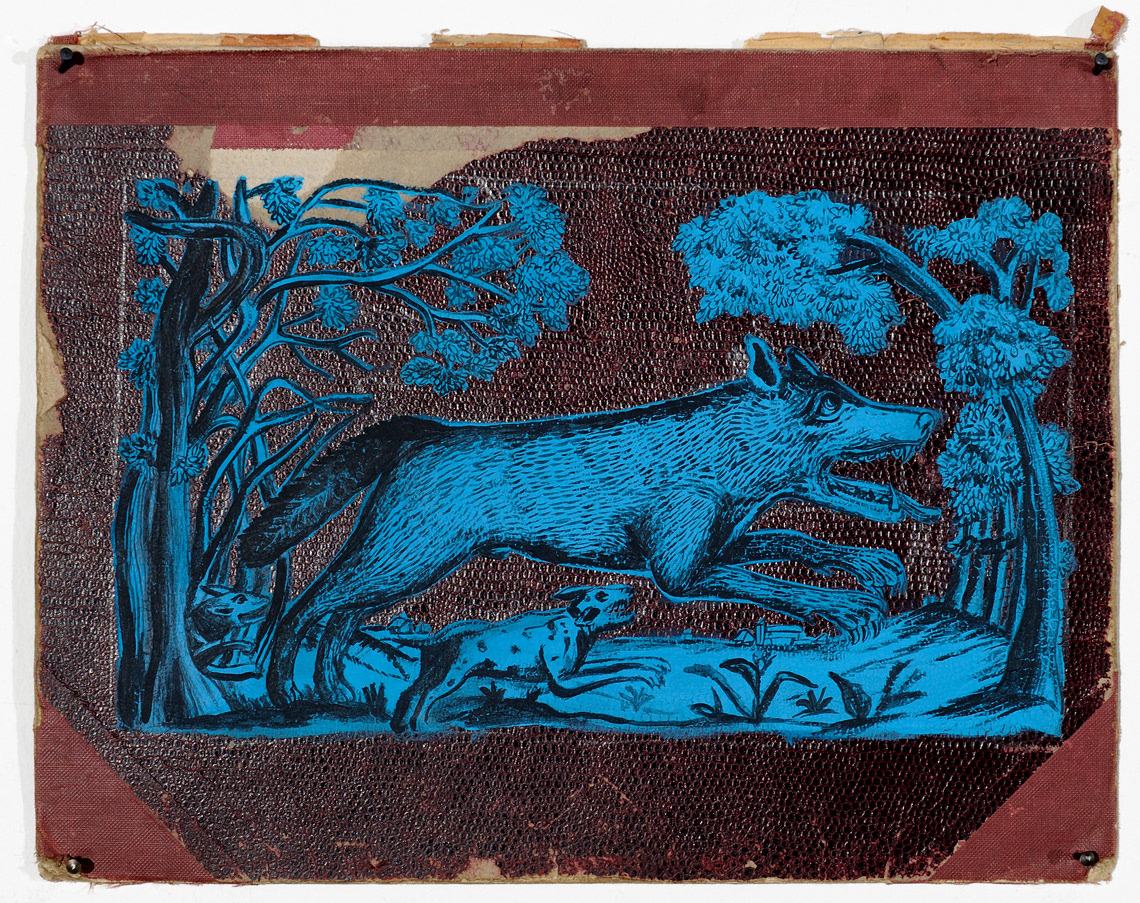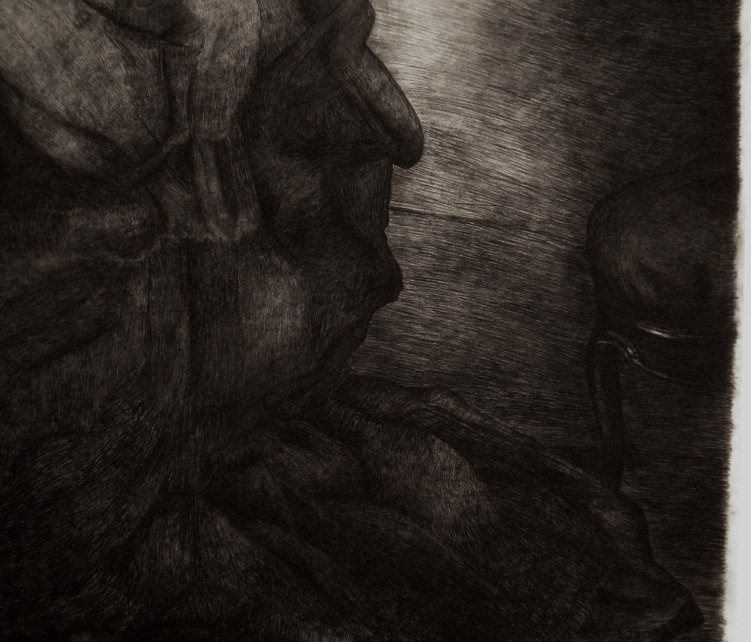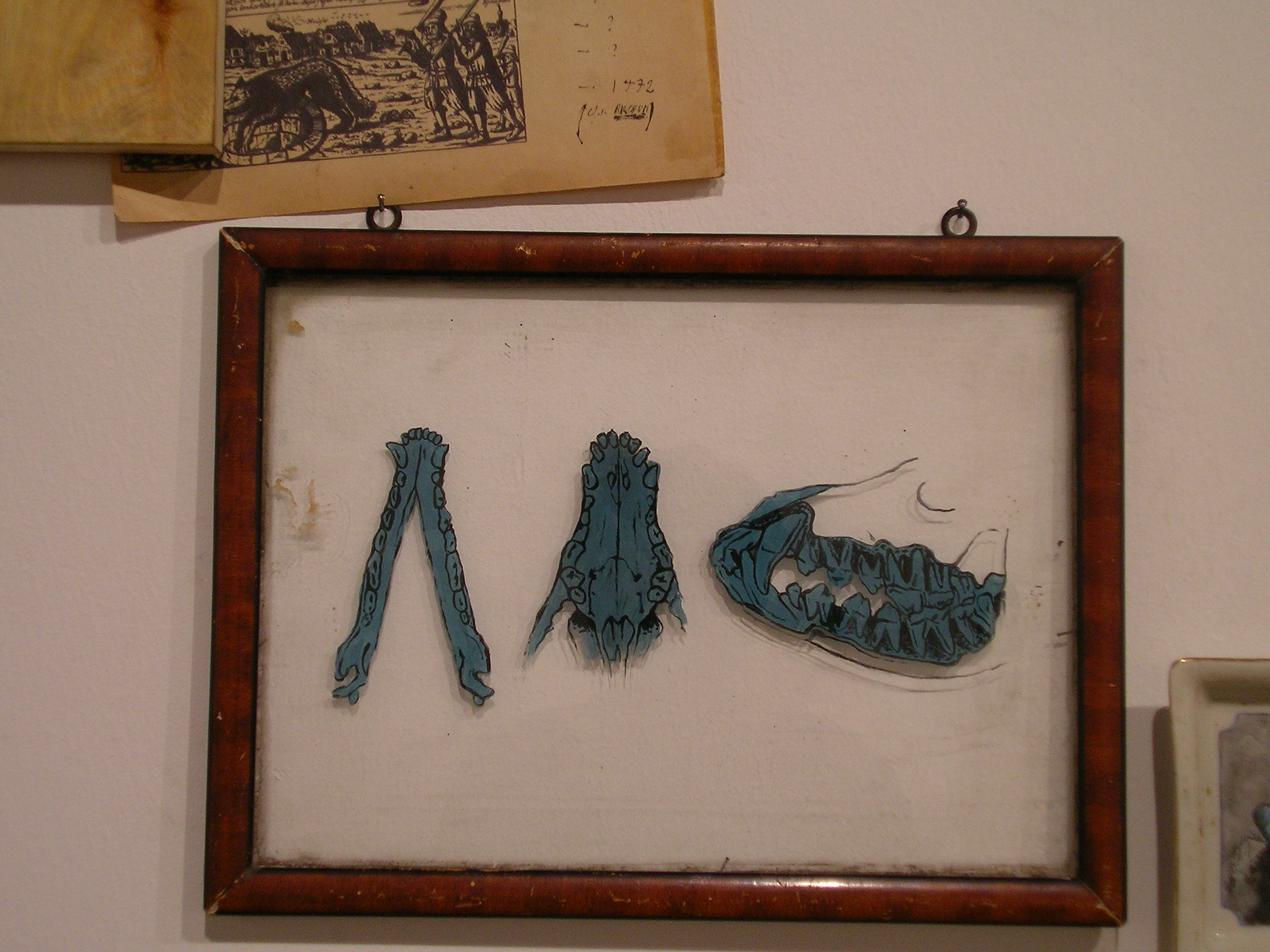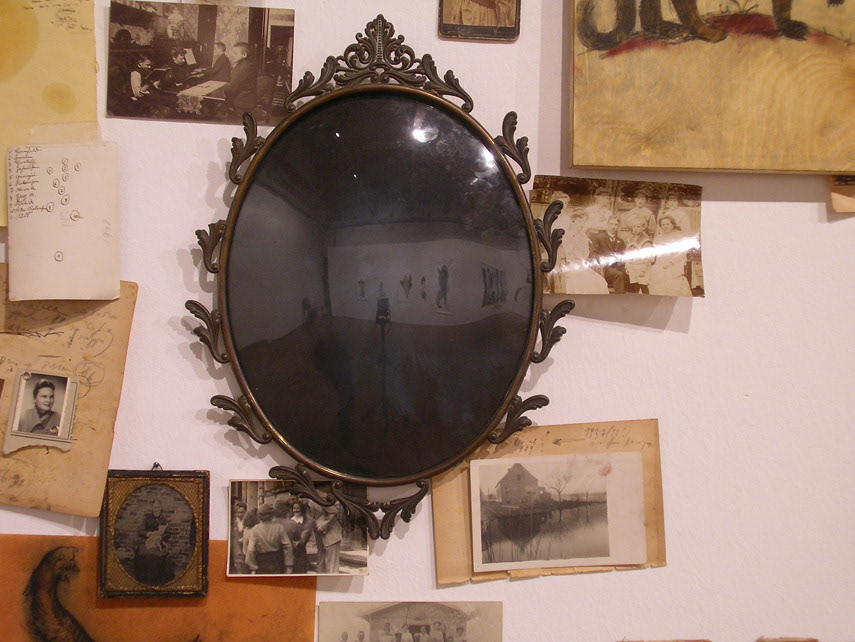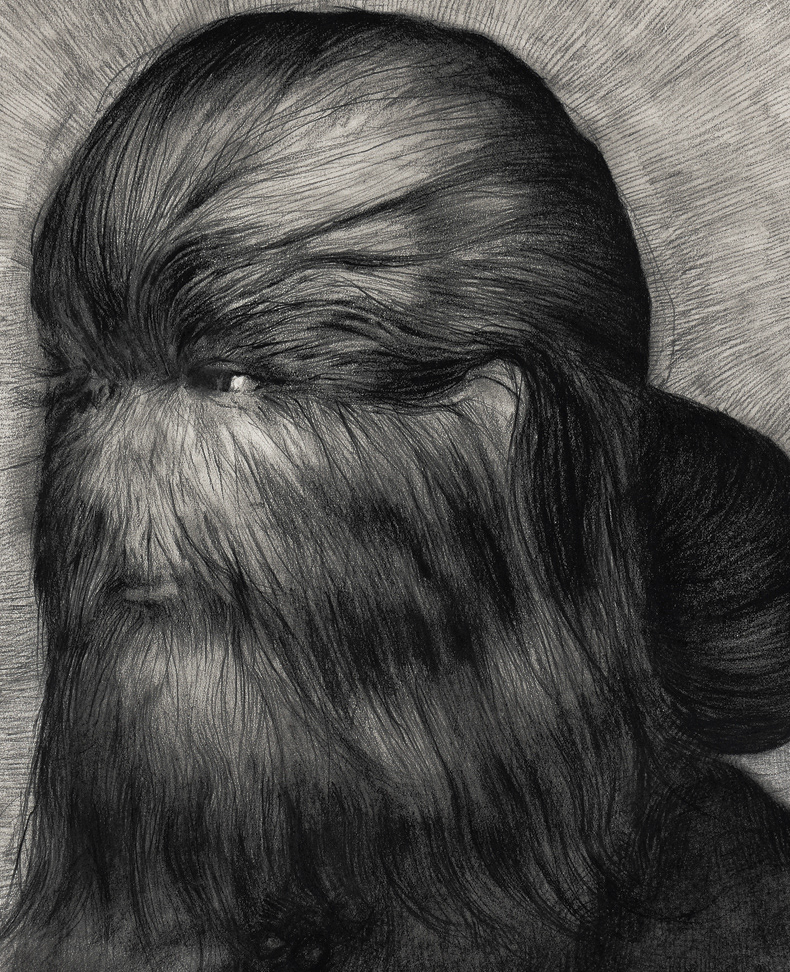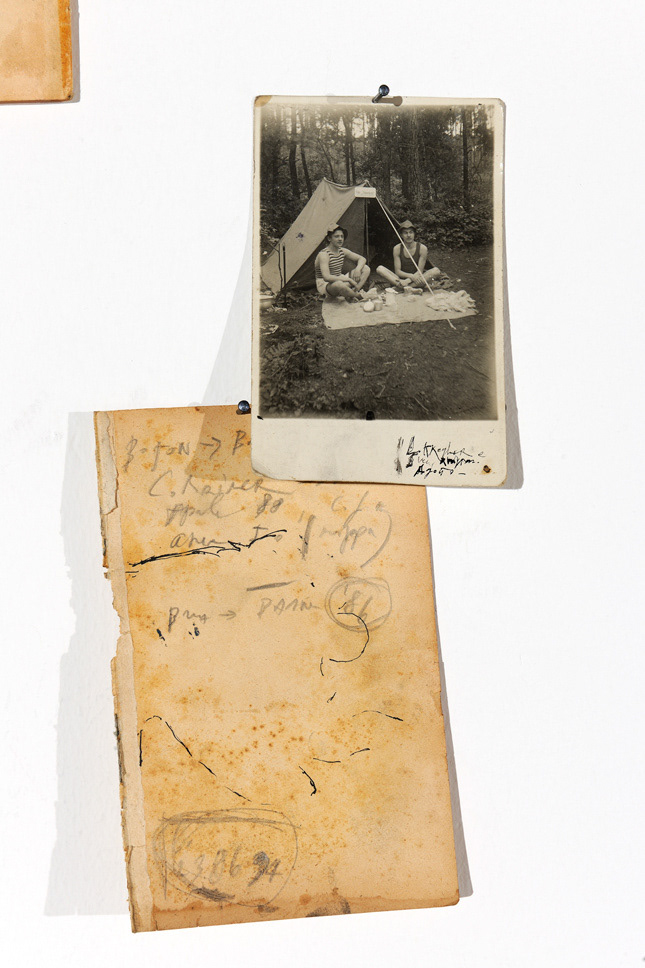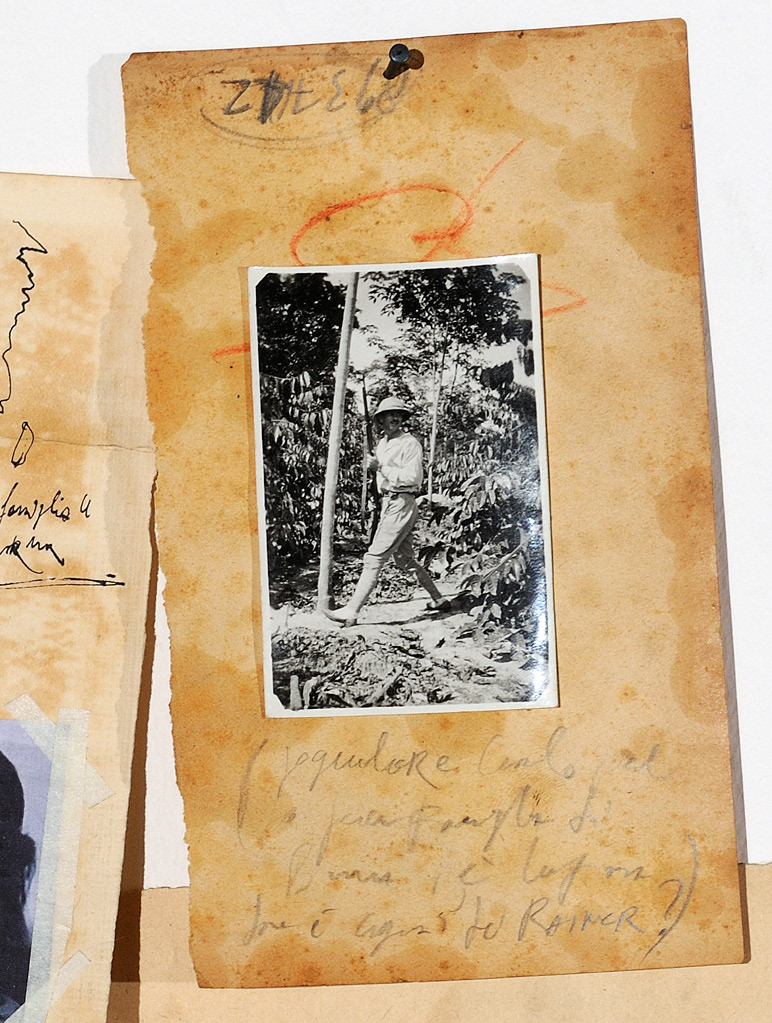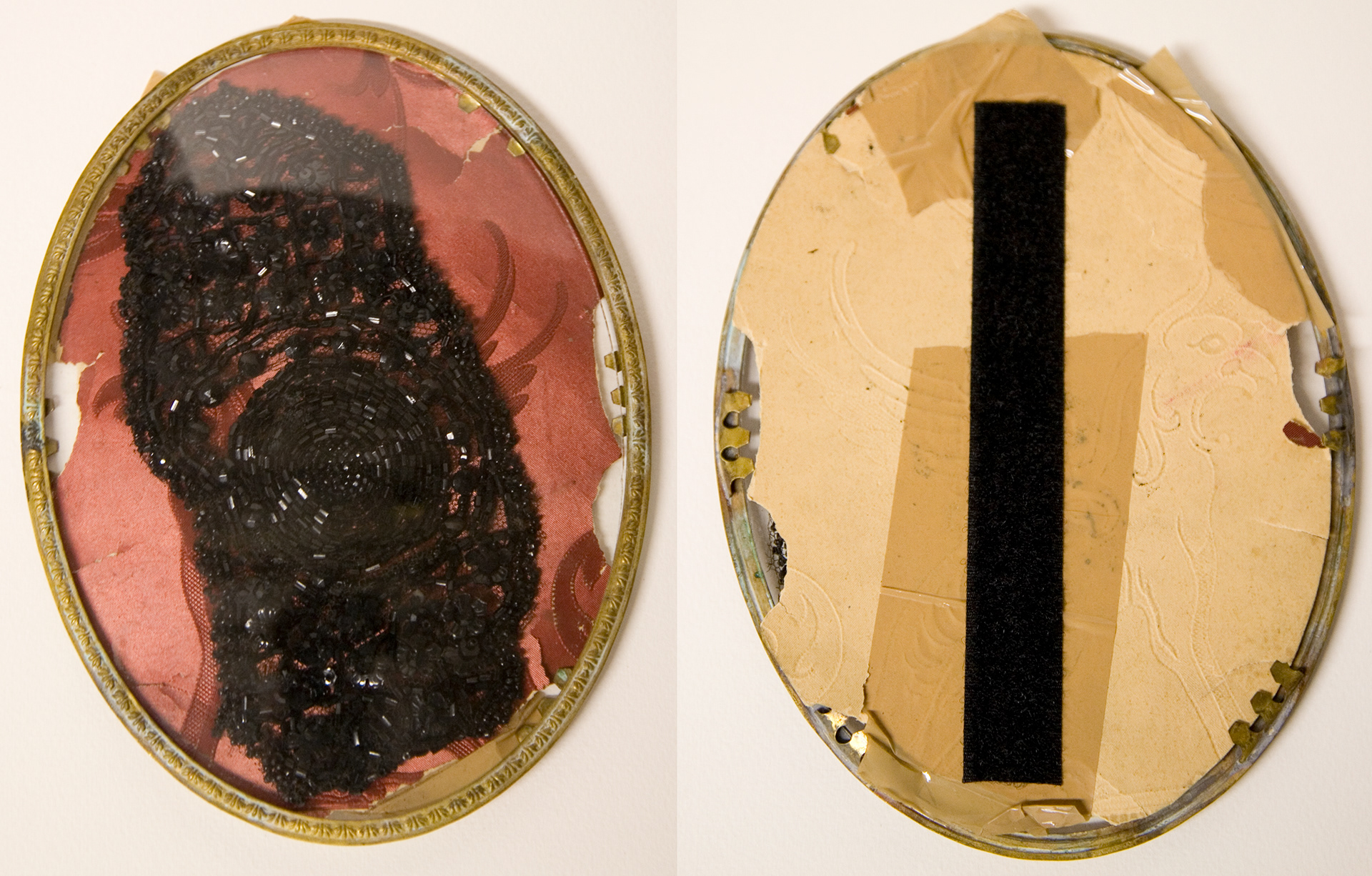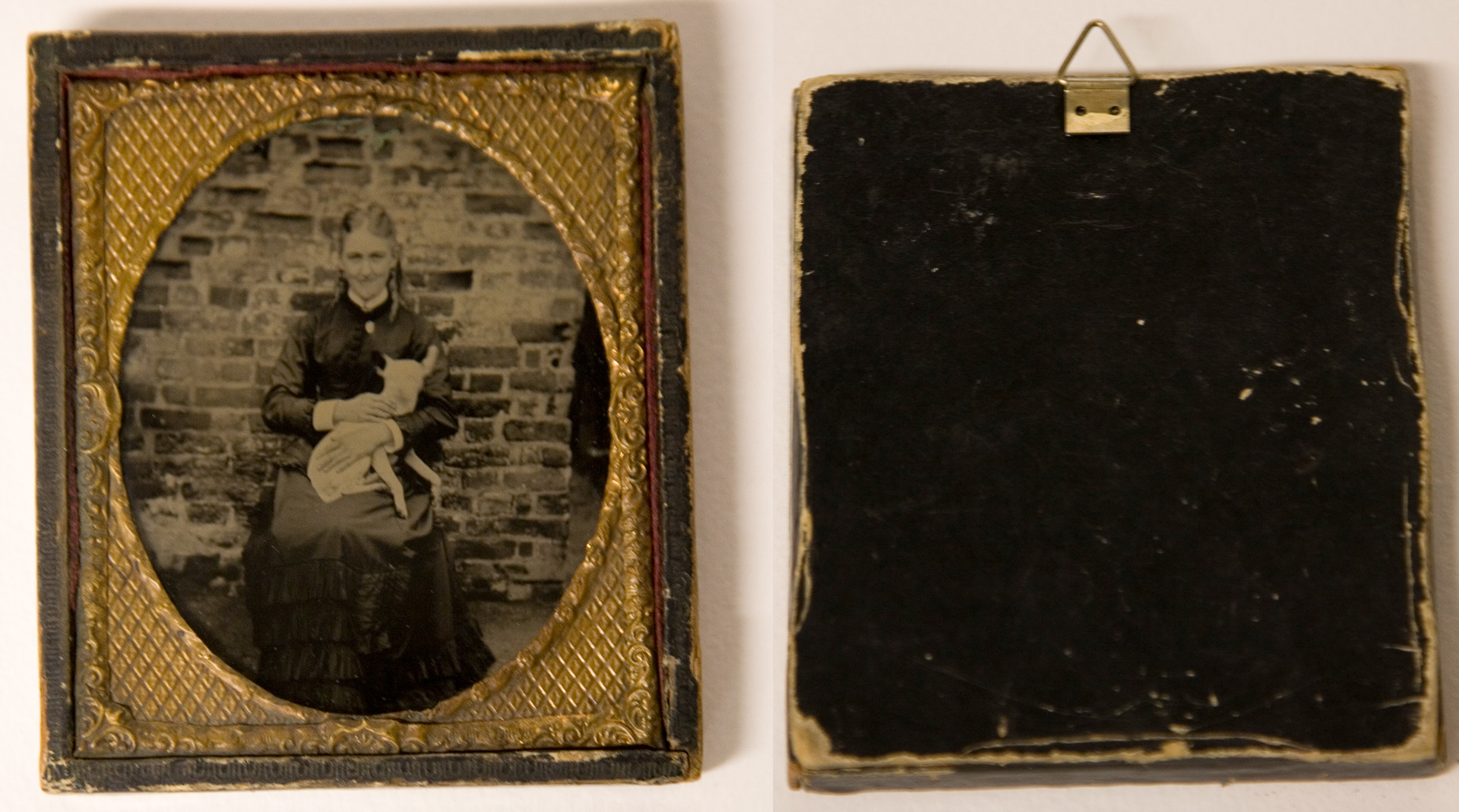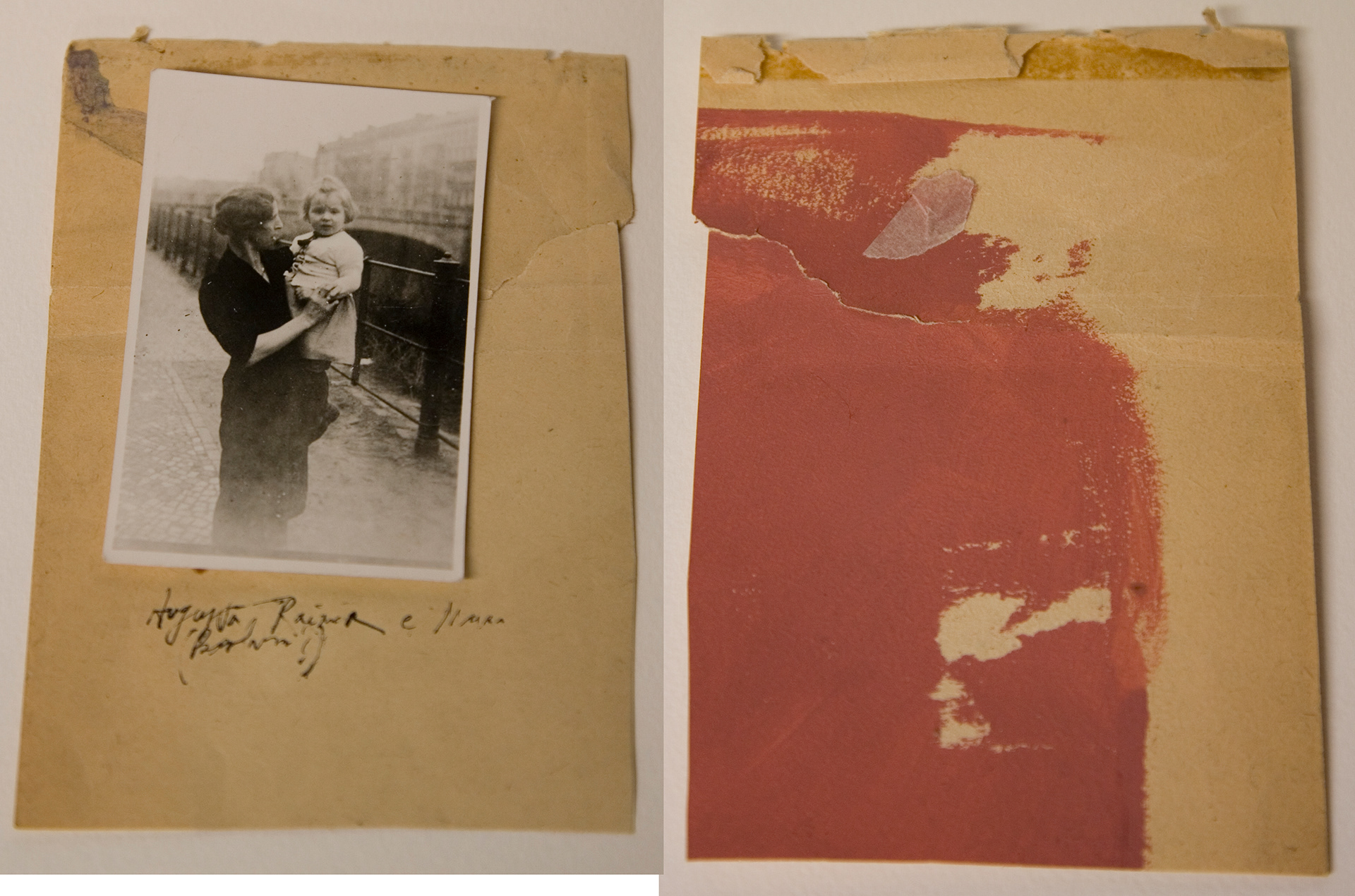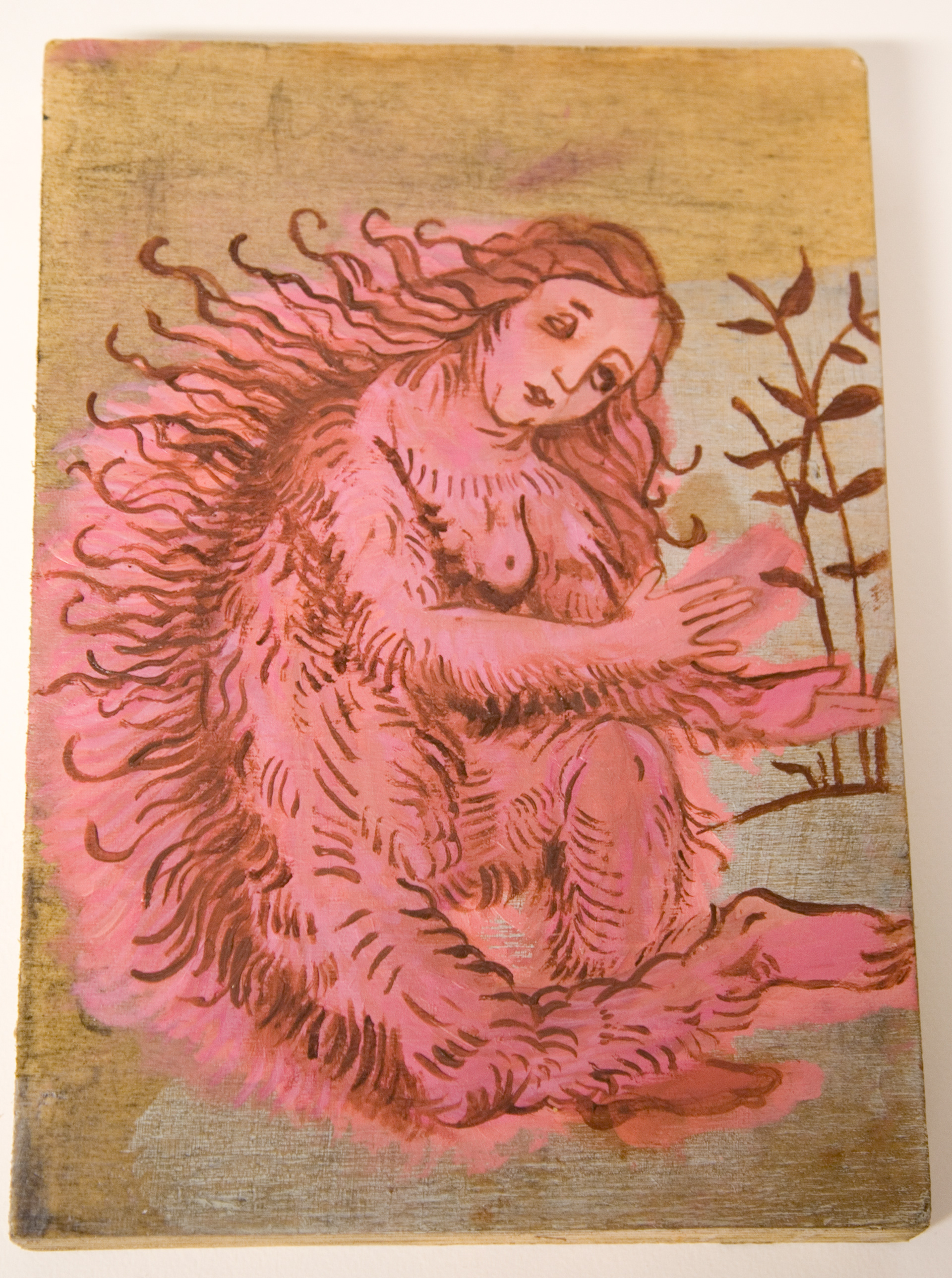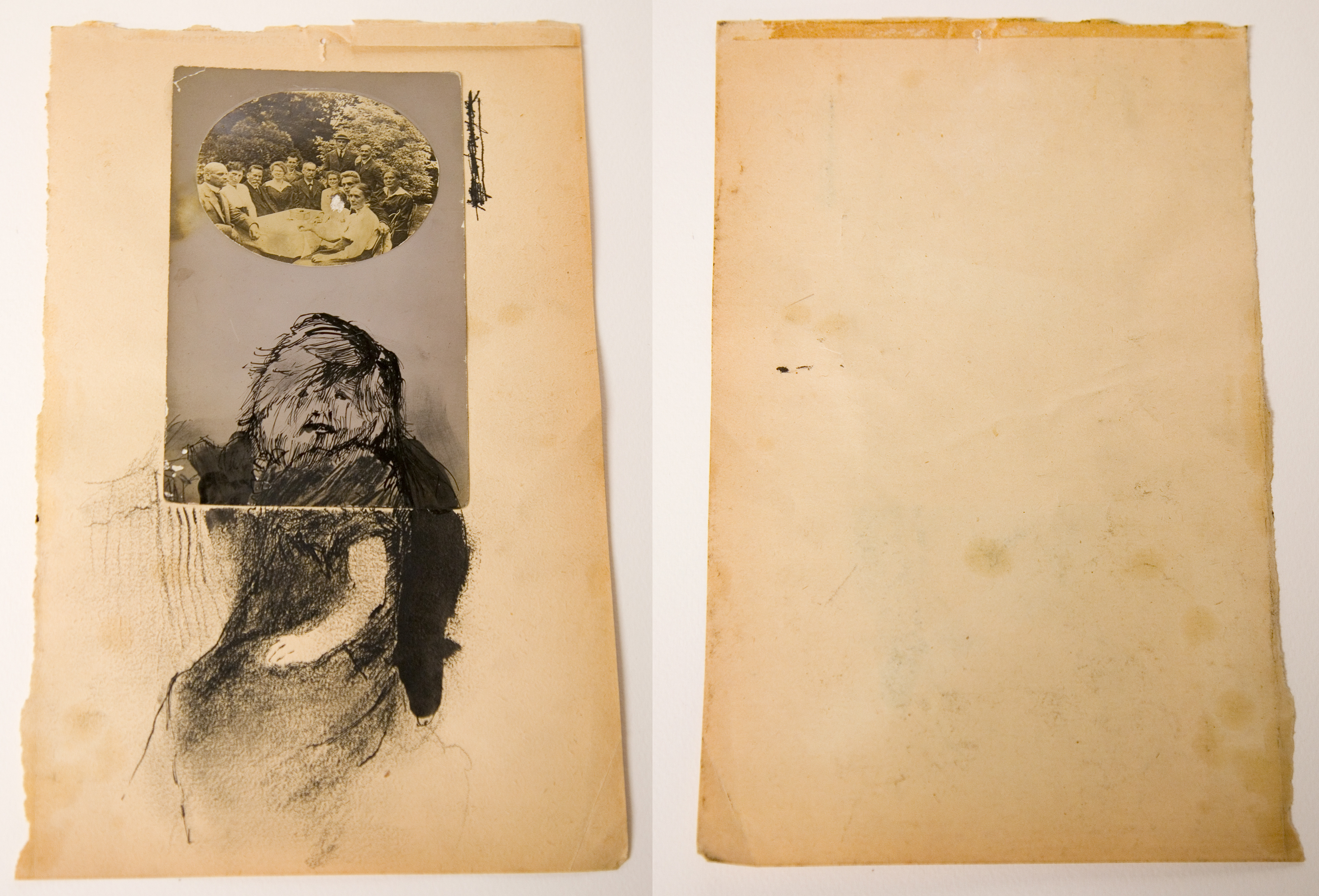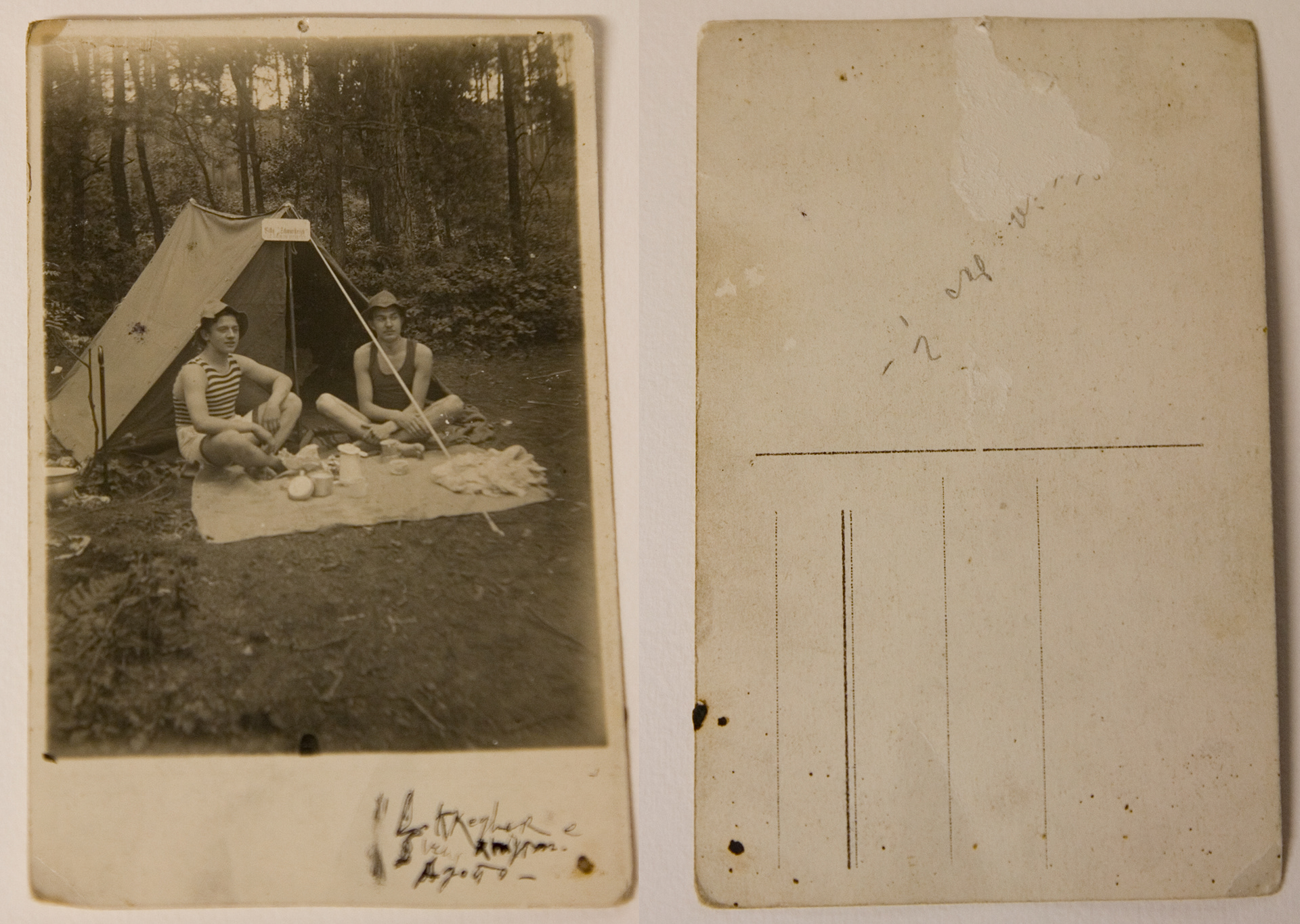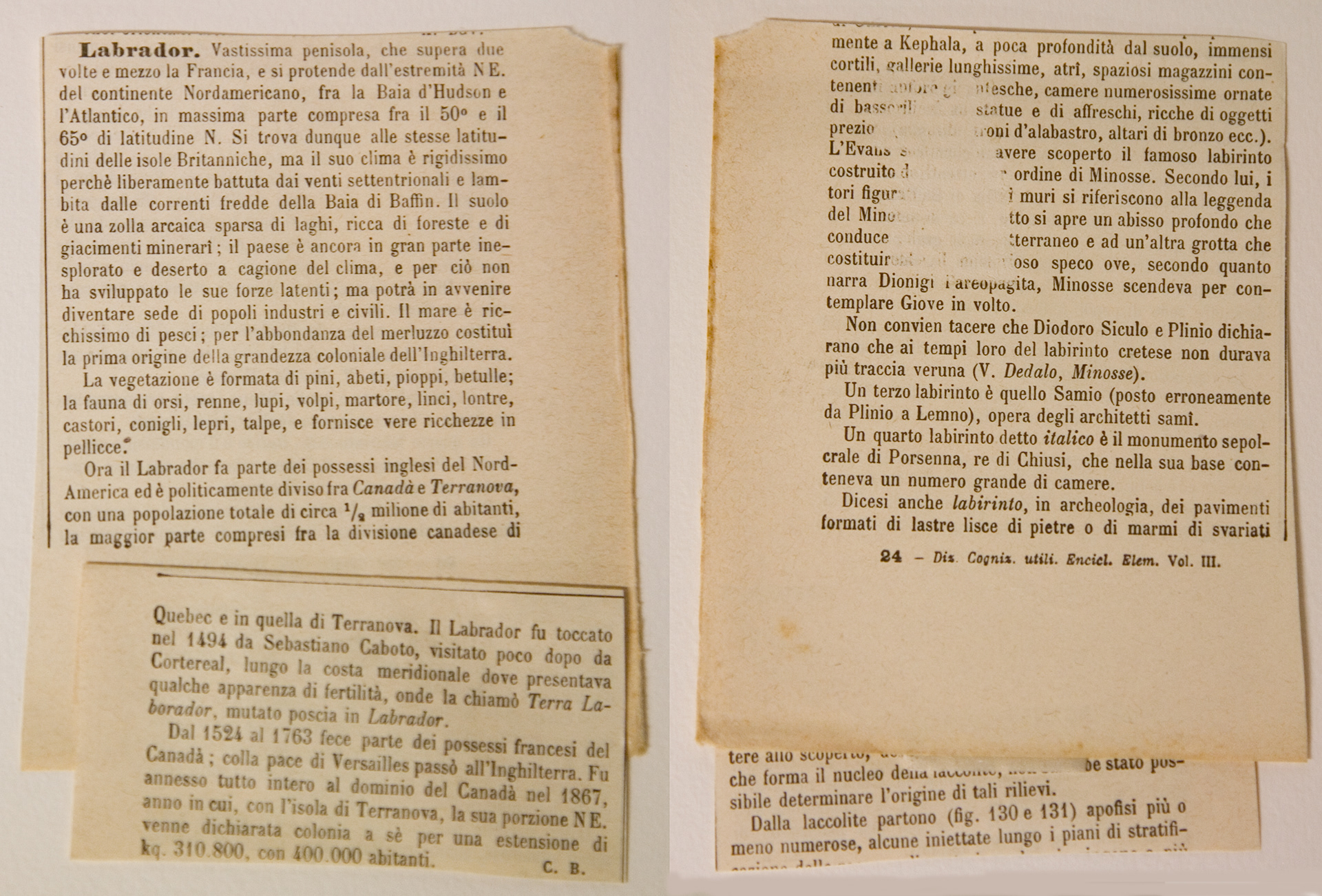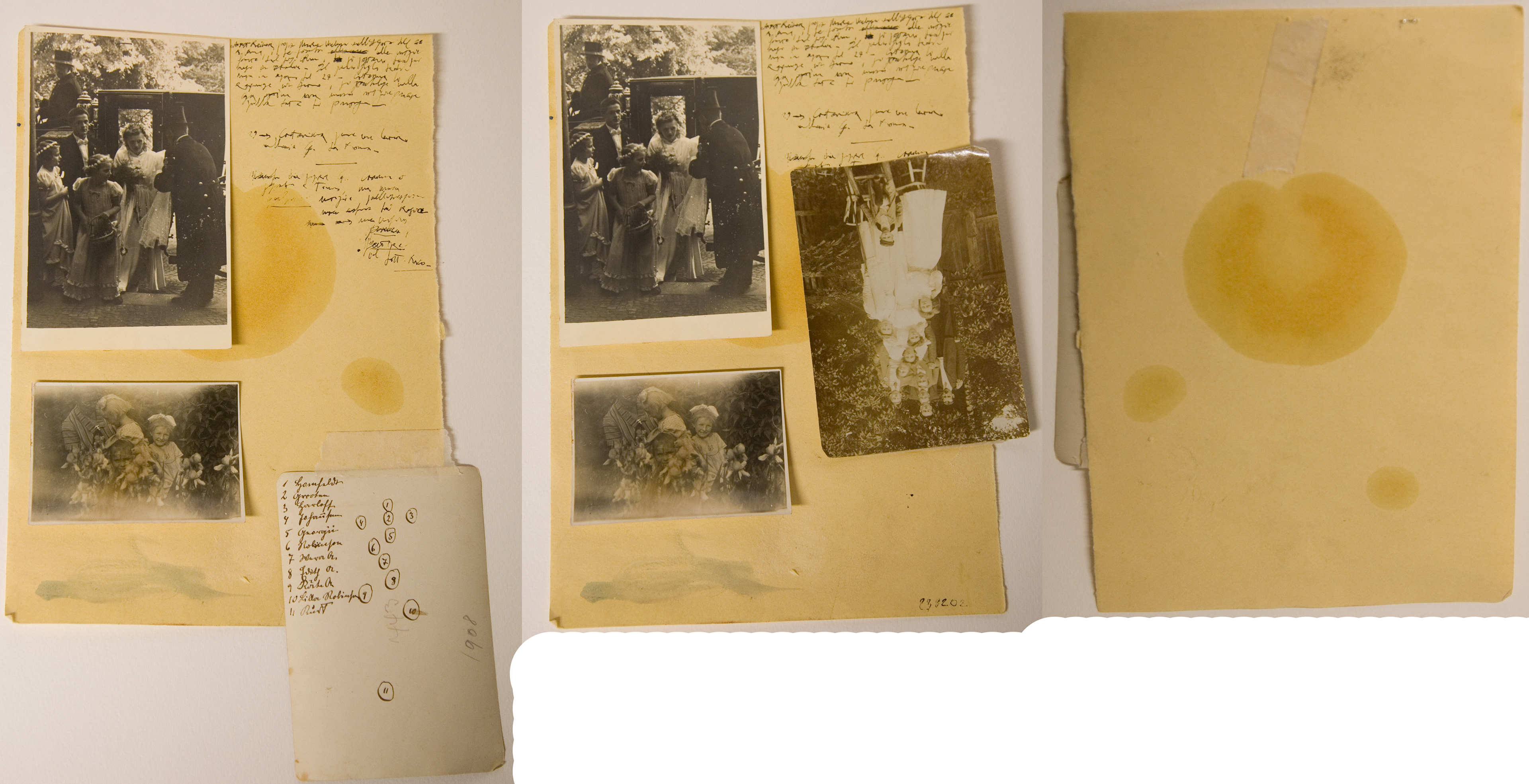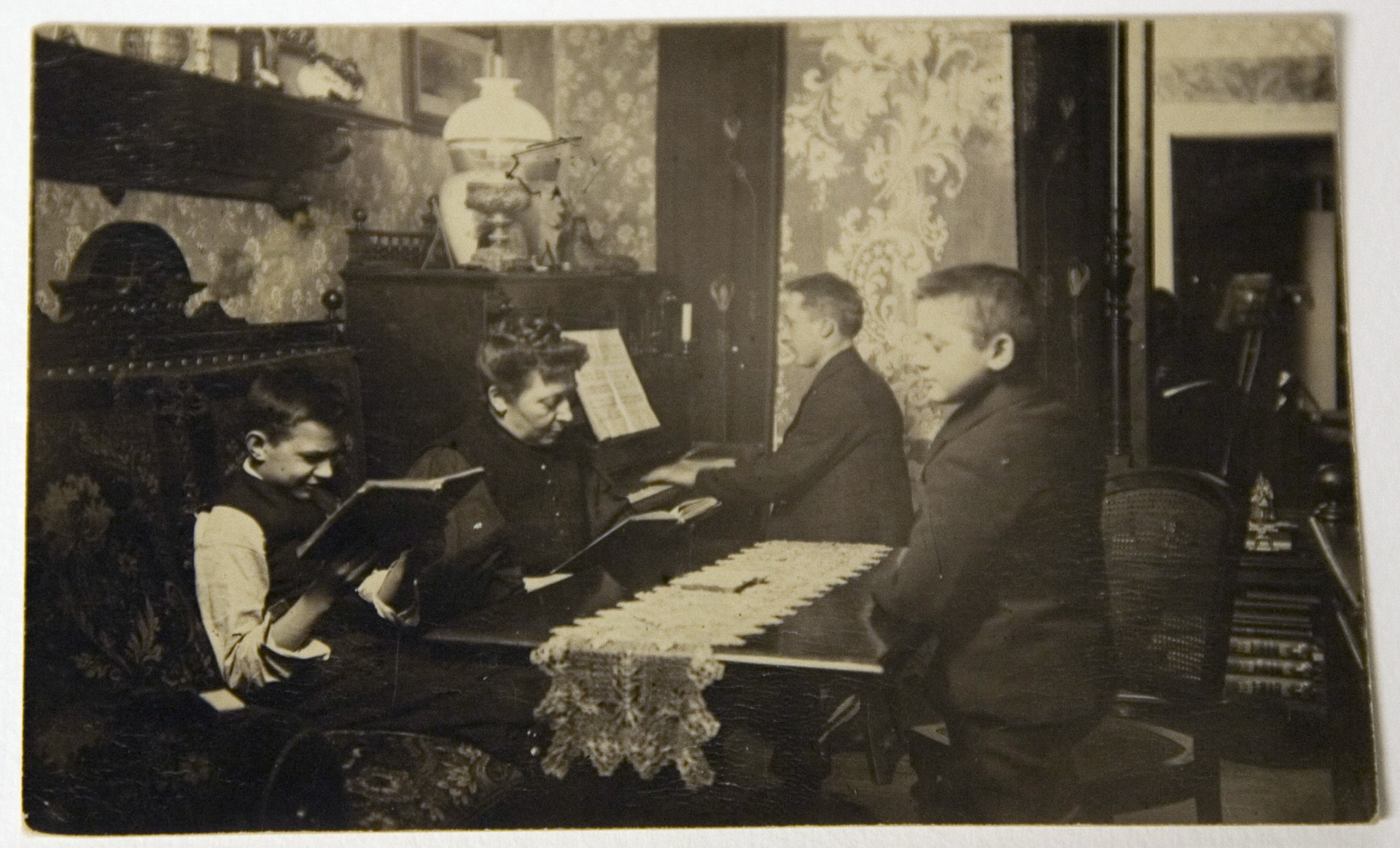The artwork was created for the exhibition Pagine da un Bestiario Fantastico at the Galleria Civica di Modena and is now part of the Galleria Civica’s Contemporary Drawing Collection.
The project takes Walerian Borowczyk's erotic horror film La Bête (1975) as a conceptual starting point and is structured as the chaotic iconographic and historical research - composed of hasty notes, photographs, drawings, and transcriptions of historical documents - of an imaginary character obsessed with an equally imaginary woman, Catarina Rainer, who supposedly lived in the late 19th century and suffered from hypertrichosis.
The pencil portrait, when viewed from a distance, evokes the atmosphere of a Victorian daguerreotype or engraving, while up close it suggests a slow, methodical execution, similar to ancient tattoos depicting religious images, thus reinforcing the iconic aspect of Catarina.
The rest of the installation, the researcher’s “notes,” is loosely based on Labrador legends about the genesis of human/animal offspring, images related to lycanthropy, information about real people with hypertrichosis, and excerpts from historical records on the “Beast of Gévaudan,” among others.
The fictional character/researcher moves between real and imagined facts, drawing connections and becoming convinced that Catarina is a supernatural, immortal being who spans multiple eras. His obsession unfolds like that of a disturbed hunter, both perturbed and in love.
The true narrative behind the construction of the work is likely to remain cryptic to the viewer, who is free to read the installed notes and create their own story, confronting the unsettling potential of the portrait and its bestial, fantastical counterpart.
The project takes Walerian Borowczyk's erotic horror film La Bête (1975) as a conceptual starting point and is structured as the chaotic iconographic and historical research - composed of hasty notes, photographs, drawings, and transcriptions of historical documents - of an imaginary character obsessed with an equally imaginary woman, Catarina Rainer, who supposedly lived in the late 19th century and suffered from hypertrichosis.
The pencil portrait, when viewed from a distance, evokes the atmosphere of a Victorian daguerreotype or engraving, while up close it suggests a slow, methodical execution, similar to ancient tattoos depicting religious images, thus reinforcing the iconic aspect of Catarina.
The rest of the installation, the researcher’s “notes,” is loosely based on Labrador legends about the genesis of human/animal offspring, images related to lycanthropy, information about real people with hypertrichosis, and excerpts from historical records on the “Beast of Gévaudan,” among others.
The fictional character/researcher moves between real and imagined facts, drawing connections and becoming convinced that Catarina is a supernatural, immortal being who spans multiple eras. His obsession unfolds like that of a disturbed hunter, both perturbed and in love.
The true narrative behind the construction of the work is likely to remain cryptic to the viewer, who is free to read the installed notes and create their own story, confronting the unsettling potential of the portrait and its bestial, fantastical counterpart.
